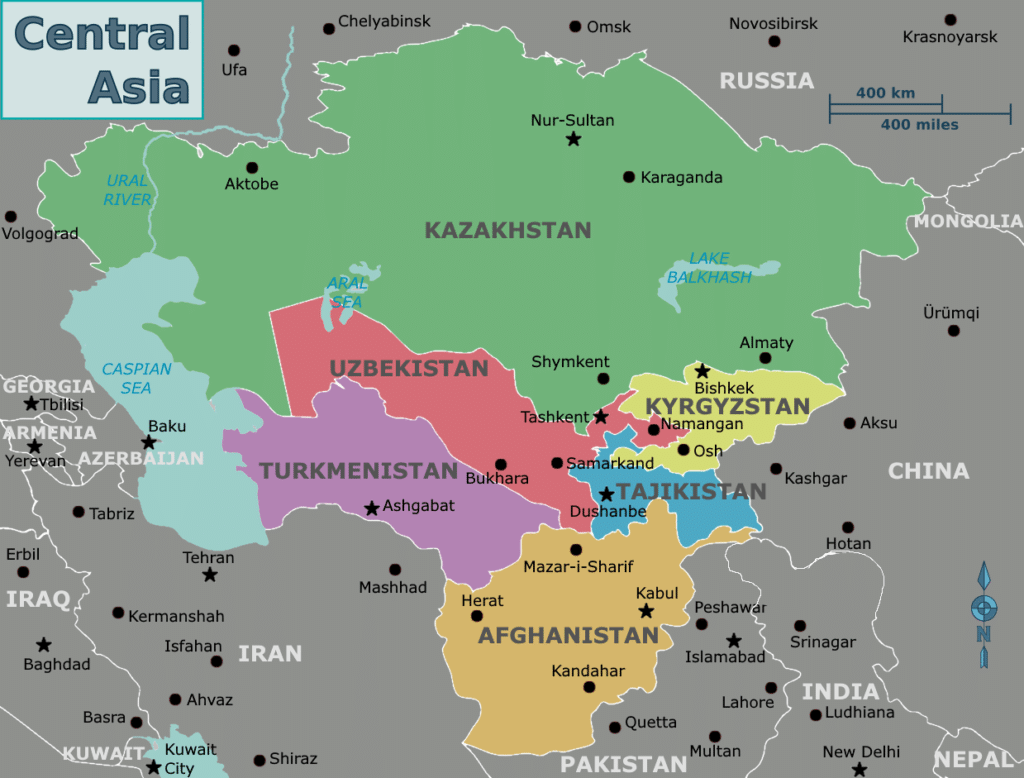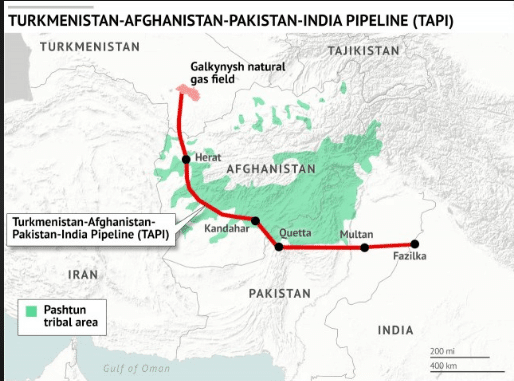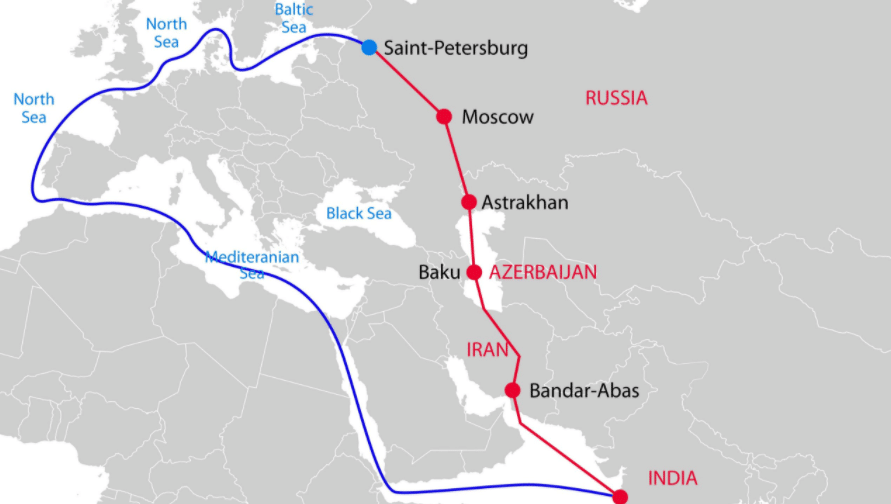Central Asia consists of five Republics which emerged as independent entities as a consequence of the Soviet disintegration in 1991. These five states include Republic of Kazakhstan, Kyrgyzstan, Tajikistan, Turkmenistan and Uzbekistan. However, some people include Afghanistan, Mongolia, and Tibet and Xinjiang provinces of China due to the geographical continuity and ethnic or cultural affinities.
These countries are transition economies and are going through difficult process of liberalisation and
privatisation. A strong Presidency with weak legislature and judiciary dominates the political system of all these countries. Democracy is yet to take roots and the region is grappling with the problem of national identities.
The region holds importance geo strategically due to its location but such an energy rich area lacks direct
access to sea, making it vulnerable for intimidation by the neighbours.

Historical Background
History is full of friendly interactions between India and Central Asia, through movement of people, goods and ideas, including spiritual interfaces that enriched us both. The relation between the two regions dates back to ancient times and since then each era has seen one or other kind of development in the region. Following ties highlight the relationship:
- India’s contacts with Central Asia goes back to the Indus Valley civilisation, which had links with the ancient civilisation of Turkmenistan.
- According to some historians, the Aryans came to India from central Asia.
- Before the advent of Islam in the central Asia, Buddhism was the dominant creed of the region.
- The ancient Silk Route, which connected China with the European markets, passed through the Central Asian region and India was one of the part of this trade link. Thus, the economic ties between the two regions date back to ancient times.
- Ancient kingdoms like the Kushana Empire had territory in parts of both regions.
- Many of the ruling dynasties of India, including the Greeks, Shakas, Kushans, Huns and the Mughals, came from or via Central Asia.
- The rivalry between the British which colonised India, and Russia which captured the central Asia interrupted the flow of people and culture between the two regions. This rivalry is often referred as ‘Great Game’.
| Great Game |
|---|
| It is a term used by historians to describe a political and diplomatic confrontation that existed for most of the nineteenth century between Britain and Russia over Afghanistan and neighbouring territories in Central and Southern Asia. |
Significance of the Relations
The relations between India and Central Asian region has a huge potential for each other and enhancing the ties between the two countries will be a win-win situation for both the countries.
For the Central Asian region, India is a significant destination because:
- India’s active presence in the region will contribute to stability and development in the entire Central Asian region.
- Central Asian countries are in a quest to diversify their strategic partnerships, and are looking for a larger and more independent role in the region.
- Central Asian countries could also gain from the techno-economic potential of India due to the skilled manpower in technological fields like the Information technology.
- Central Asia’s desire for diversifying hydro-power and energy export routes would correspond with India’s quest for diversifying imports.
- The soft power of India in terms of its skilled workforce, and technological development, particularly in IT firms can help in significant development of the service sector of the region.
For India, the Central Asian region holds significance because:
- Central Asia is strategically positioned as an access point between Europe and Asia and offers extensive potential for trade, investment and growth.
- The region is richly endowed with commodities such as crude oil, natural gas, cotton, gold, copper, aluminium and iron.
- India is one of the major importer and consumer of energy. The country imports nearly two thirds of its petroleum requirements. To meet this requirement, Central Asia and the Caspian region are the emerging alternative sources for the supply of oil and natural gas.
- Central Asian Region plays an important role in developing strong defence ties by strengthening strategic and security cooperation with a strong focus on military training. However, this security cooperation has its own geographical limitations because the Central Asian region is not animmediate neighbour of India and the trade route has to be passed either through Pakistan or Afghanistan, both of which are unstable and unreliable.
The increasing tussle in the Central Asian region over the energy resources, and the rising economic and regional power of India has made it imperative for India to increase its focus on Central Asia. For these reasons, India has unveiled the ‘Connect Central Asia Policy’ in 2012 during the first meeting of Track II initiative of India-Central dialogue in Bishkek, Kyrgyzstan to fasttrack India’s relations with the Central Asian states.
Connect Central Asia Policy
The connect Central Asia Policy is a broad based approach which includes political, security, economic
and cultural connections. Some of the elements of the policy are:
- Continuing to build on strong political relations through the exchange of high level visits.
- Strengthening strategic and security cooperation including counter-terror cooperation.
- Stepping up multilateral engagement with Central Asian partners using the synergy of joint efforts through existing fora like the SCO, Eurasian Economic Community (EEC) and the Custom Union.
- Medical field is another area that offers huge potential for cooperation and India shall extend this cooperation by setting up of civil hospitals and Clinicals in Central Asia.
- In the area of education, India offers to be a cheaper destination compared to the western universities. Thus, India would like to assist in the setting up of a Central Asian University in Bishkek that could come up as a centre of excellence to impart world class education in areas like IT, management, philosophy and languages.
- The policy aims to setup a Central Asian e-network with its hub in India to deliver tele-education and telemedicine connectivity linking all the five Central Asian States.
- India could be a more viable and affordable business partner in the area of construction and world class infrastructure provider.
- Absence of a viable banking infrastructure in the region is a major barrier to trade and investment. Indian banks can expand their presence if they see a favourable policy environment.
- Another area for cooperation can be air connectivity.
- Yet another very significant focus of the policy is people to people contacts.
India’s Connect Central Asia Policy is in consonance with India’s overall policy of deepening engagement in Eurasia, strengthening relations with China, with Pakistan, and building on traditional relationship with Russia. One of the most important area of cooperation is the increase in connectivity which is proposed through International North South Transport Corridor.
Areas of Cooperation
Energy
- Energy is the most important area of co-operation. The CAR countries have an abundance of energy resources.
- Kazakhastan is one of the first countries with which India launched civil nuclear cooperation.It has been supplying nuclear fuel to Indian nuclear plants since 2010.
- The TAPI project, a trans-country natural gas pipeline from Caspian Sea, Turkmenistan to India through Afghanistan and Pakistan is as an important to connect energy rich Central Asia with energy starved South Asia.
- It contains vast hydrocarbon fields both on-shore and off-shore in the Caspian Sea which homes around 4 percent of the world’s natural gas reserves and approximately 3 percent of oil reserves.

Security and Defense
- Security, stability and prosperity of Central Asia is imperative for peace and economic development of India. Central Asia comprises our ”extended neighborhood”, it deserves much greater attention than it has received so far.
- India and Central Asian countries have a shared interest in the stability of Afghanistan and counter-terror initiatives
- India conducts annual military exercises with some Central Asian countries .
- ”Khanjar” is annual joint military exercise between India and Kyrgystan.
- “Kazind” is annual joint military exercise between India and Kazakhastan.
Shanghai Cooperation Agreement ( SCO )
- India recently joined the Shanghai Cooperation Agreement (SCO) a Eurasian political, economic and military organisation which was founded in 2001. India will get an opportunity to play its due role in stabilising the situation in Afghanistan which is assuming disturbing proportions on account of expanding the power of Taliban.
- Benefits of it to India?
- It provides another venue for engagement with China and Pakistan, building up trust through cooperation.
- It will help India fulfil its aspiration of playing an active role in its extended neighbourhood as well as checking the ever growing influence of China in Eurasia.
- India will get an opportunity to play its due role in stabilising the situation in Afghanistan which is assuming disturbing proportions on account of expanding the power of Taliban.
- Promotion of India’s economic integration with the Central Asian republics, which is in line with India’s Connect Central Asia policy. Member countries of the grouping are rich in energy resources – both hydrocarbons and uranium.
- India’s potential participation in the Eurasian Economic Union (EEU) will be an added advantage to make this partnership more fruitful.
Development Cooperation
- Development Cooperation between India and Central Asia has focused on Lines of Credit that financed development and manufacturing projects
- The training programs under the Indian Technical and Economic Cooperation (ITEC) Programme, which started in the early 1990s, continue to flourish in the region.
- Grants to Tajikistan have included funding to rehabilitate and modernise the Varzob-1 Hydro Power Plant through the Indian Public Sector Units Bharat Heavy Electricals Limited (BHEL) and the National Hydroelectric Power Corporation.
- India has focused on providing basic training and skill development to local people through tool room training centres.
- There are plans to set up a medical and educational E-Network for the five countries in the Central Asian region based on the model of the Pan African e-Network, which provides remote medical and educational support to hospitals and universities in African countries
Trade and Investment potential
- The economic development of Central Asia, especially in Kazakhstan, Turkmenistan and Uzbekistan, leads to development of sectors like IT, pharmaceuticals and tourism.
- India has expertise in these sectors and deeper cooperation will give a fresh impetus to trade relations with these countries.
- Kazakhastan is India’s largest trade and investment partner in Central Asia
Soft Power
- The “people-to-people” contact has been a defining feature of India’s Connect Central Asia Policy.
- Many students from Central Asia come to India for higher studies because India provides higher education at marginal cost when compared to European and American universities.
- Indian cultural diversity has been extremely popular in the region since the time of the USSR.
- People in Central Asia listen to Hindi music and watch Indian Movies from Bollywood.
Connectivity
- Development of the International North-South Transport Corridor (INSTC). INSTC is a multi-mode network of ship, rail, and road route for moving freight between India, Iran, Afghanistan, Armenia, Azerbaijan, Russia, Central Asia and Europe.
- Becoming a member of Ashgabat Agreement. The Ashgabat agreementis a multimodal transport agreement between India, Iran, Kazakhstan, Oman, Turkmenistan and Uzbekistan for creating an international transport and transit corridor facilitating transportation of goods between Central Asia and the Persian Gulf. The agreement came into force in April, 2016.

India and China in Central Asia
Traditionally, Central Asia has been an arena of “great game” which has been renewed in the modern version as ‘New Great Game‘. This new great game refers to a kind of rivalry that is taking over the central Asian region for its energy resource utilisation by powerful countries like USA, Russia and China.
However, the greatest concern for India in the region is growing influence of China. The following points represent areas that shall be worked upon to involve India in the region for a constructive relation with the region and countering china’s growing influence.
- Central Asian countries are land locked and have looked for building connectivity to global markets. To this, China has been a forerunner, which is evident from the revival of its ancient silk route renamed as One Belt One Road policy and KazakhChina gas pipeline. This arena, however, has been countered by providing an alternative link through INSTC, connecting India and Central Asia.
- China’s primary thrust has been to make use of Central Asia’s vast mineral resources for its economic development, to supply the much needed consumer goods to Central Asia and to protect itself against the threats of “separatism, extremism and terrorism” arising out of Central Asian territories.
- China is following a strategic approach to Central Asia. It has offered $ 10 billion grant and aid to SCO members. It is squarely focusing on trade, energy and infrastructure cooperation.
- India-Central Asia Trade is around $1.48 billion (2017-18) as compared to China’s $46 billion. Therefore, it is imperative for India to increase its bilateral as well as regional trade to match with Chinese counterpart.
Challenges in Relations
The relationship, despite close historical & cultural contacts, has not progressed to the desired extent. The key constraint India faces is the lack of direct access to Central Asia.
- Russia and China have deep economic and security ties with Central Asian countries making it a challenge for India to find strategic space in the region.
- Growing axis of Russia-China-Pakistan would limit India’s presence in Central Asia.
- The International North-South Transport Corridor (INSTC) which would pass through Iran, is still underdeveloped and requires huge investment.
- Lack of direct access to Central Asia: India to reach Central Asia, the shortest route goes via Pakistan and Afghanistan. Pakistan’s hostility with India remains problematic for India to connect Central Asia.
- India views the fragility of Central Asia as a source of insecurity.
- The region’s borders with Afghanistan are extremely porous for militants as well as for those engaged in drug trafficking and weapons proliferation.
- Chinese presence: Central Asia is part of Silk Road Economic Belt (BRI) initiative. India could not match the deep pockets of china.
- The Turkmenistan-Afghanistan-Pakistan-India (TAPI) and Iran-Pakistan-India (IPI) pipelines projects are not moving smoothly due to Pakistan and Afghanistan.
Way Forward
- India could use the support of Moscow which would prefer to promote multipolarity and restrict growing Chinese clout in the region.
- India can further strengthen the relations by projecting its soft power, from Buddhism to Yoga.
- Also, Bollywood in the form of contemporary Indian movies and soap operas is positively received by the people of the region.
- Education and medical field provide an excellent opportunity for India to showcase its soft power in central Asia.
- To institute and strengthen defence and security dialogue with Central Asian countries.
- A forum of India and Central Asian Region think tanks should be set up.
- India’s strong position in the pharmaceuticals sector, both in terms of quality as well as pricing can be useful to expand their market share with a little focus and aggressive marketing.
- The points mentioned in Connect Central Asia Policy should be followed with adequate resources and implementation mechanisms.

Excellent